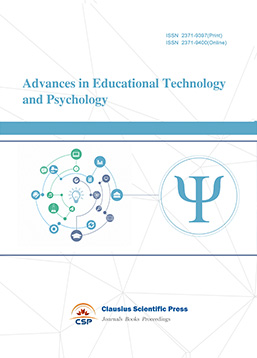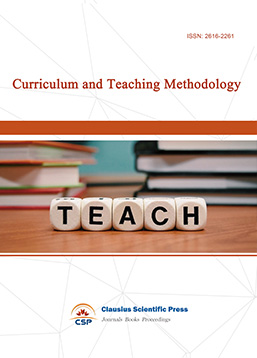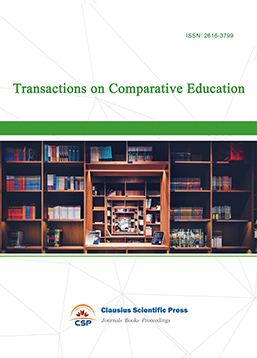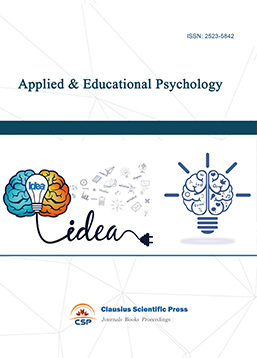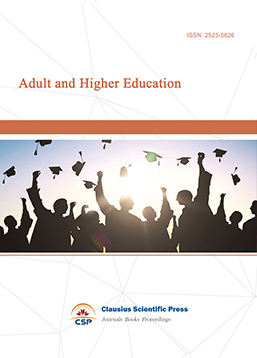Research on Deepening the Integration Mechanism of Industry and Education in Higher Vocational Colleges to Promote Rural Revitalization under the Background of Double High School—Taking Yangling Vocational and Technical College as an Example
DOI: 10.23977/avte.2024.060519 | Downloads: 19 | Views: 934
Author(s)
Shuantao Dong 1
Affiliation(s)
1 College of Mechanical and Electrical Engineering, Yangling Vocational & Technical College, Yangling, Shaanxi, 712100, China
Corresponding Author
Shuantao DongABSTRACT
In the context of the construction of "double high" (high-level vocational schools and high-level professional groups), vocational colleges, as important bases for cultivating technical and skilled talents, are increasingly playing a prominent role in promoting rural revitalization. As a leading agricultural vocational college, Yangling Vocational and Technical College actively explores the mechanism of industry education integration (IEI) to promote rural revitalization. However, current vocational colleges still face the problems of insufficient depth of industry education integration and a disconnect between talent training models and industrial demands in deepening the integration of industry and education and serving rural revitalization. This article first introduces the background and challenges of deepening the integration mechanism of industry and education in vocational colleges to promote rural revitalization under the background of dual high schools. Then, this article elaborates in detail on the practical exploration of Yangling Vocational and Technical College in the integration of industry and education, including the integration mode of industry and education, talent training system, social services, and technological innovation. Furthermore, this article analyzes the promoting effect of the integration mechanism of industry and education in Yangling Vocational and Technical College on rural revitalization through experimental investigation results. The experimental survey results show that in terms of student internship satisfaction, the experimental group has a satisfaction rate of 85%, which is much higher than the reference group's 70%. The teacher participation rate of the experimental group also reaches 90%. In terms of graduate employment rate, the experimental group has a higher employment rate of 92% than the reference group's 80%, with a difference of 12%. This further proves the outstanding performance of the experimental group in improving students' employability and expanding employment channels, providing strong support for rural revitalization.
KEYWORDS
Double High Background; Vocational Colleges; Integration of Industry and Education; Rural RevitalizationCITE THIS PAPER
Shuantao Dong, Research on Deepening the Integration Mechanism of Industry and Education in Higher Vocational Colleges to Promote Rural Revitalization under the Background of Double High School—Taking Yangling Vocational and Technical College as an Example. Advances in Vocational and Technical Education (2024) Vol. 6: 125-133. DOI: http://dx.doi.org/10.23977/avte.2024.060519.
REFERENCES
[1] Xue E, Li J. Exploring the type-based vocational education system: Insights from China[J]. Educational Philosophy and Theory, 2022, 54(10): 1670-1680.
[2] Fang C. On integrated urban and rural development[J]. Journal of Geographical Sciences, 2022, 32(8): 1411-1426.
[3] Wang Y, Peng Q, Jin C, et al. Whether the digital economy will successfully encourage the integration of urban and rural development: A case study in China[J]. Chinese Journal of Population, Resources and Environment, 2023, 21(1): 13-25.
[4] SUN J, LU Y. Mechanism and optimization path of comprehensive land consolidation oriented urban-rural integration [J]. Journal of Natural Resources, 2023, 38(9): 2201-2216.
[5] Tang H H. The strategic role of world-class universities in regional innovation system: China's Greater Bay Area and Hong Kong's academic profession[J]. Asian Education and Development Studies, 2022, 11(1): 7-22.
[6] Deng X, Wang Y, Song M. Development geography for exploring solutions to promote regional development[J]. Geography and Sustainability, 2023, 4(1): 49-57.
[7] Mei W, Symaco L. University-wide entrepreneurship education in China's higher education institutions: Issues and challenges [J]. Studies in Higher Education, 2022, 47(1): 177-193.
[8] Guo Y, Liu Y. Sustainable poverty alleviation and green development in China's underdeveloped areas[J]. Journal of Geographical Sciences, 2022, 32(1): 23-43.
[9] Wang G. 'A cultured man is not a tool' : the impact of confucian legacies on the standing of vocational education in China [J]. Journal of Vocational Education & Training, 2024, 76(1): 179-196.
[10] Wang Z, Wang G. Vocational education: a poor second choice? A comparison of the labour market outcomes of academic and vocational graduates in China[J]. Oxford review of education, 2023, 49(3): 408-427.
[11] Pan W, Wang J, Li Y, et al. Spatial pattern of urban-rural integration in China and the impact of geography[J]. Geography and Sustainability, 2023, 4(4): 404-413.
[12] Li J, Xue E. Reimaging the panorama of international education development in China: A retrospective mapping perspective [J]. Educational Philosophy and Theory, 2024, 56(7): 647-657.
[13] Zhang F L, Ayoungman F Z, Islam M S. Institutional capital, ancestral hall, and the reshaping of ancient rule: an empirical analysis of the new energy of chinese heritage elements in rural revitalization[J]. Journal of the Knowledge Economy, 2024, 15(1): 2726-2760.
[14] Tan H, Zhou G. Gentrifying rural community development: A case study of Bama Panyang River Basin in Guangxi, China[J]. Journal of Geographical Sciences, 2022, 32(7): 1321-1342.
[15] Wigger A. The new EU industrial policy and deepening structural asymmetries: Smart specialisation not so smart[J]. JCMS: Journal of Common Market Studies, 2023, 61(1): 20-37.
[16] Liao B, Li L. How can urban agglomeration market integration promote urban green development: Evidence from China's Yangtze River Economic Belt[J]. Environmental Science and Pollution Research, 2022, 29(7): 10649-10664.
[17] Wang Y. Development characteristics, influencing mechanism and coping strategies of resource-based cities in developing countries: a case study of urban agglomeration in Northeast China[J]. Environmental Science and Pollution Research, 2022, 29(17): 25336-25348.
[18] Zhuang T, Zhou H. Developing a synergistic approach to engineering education: China’s national policies on university–industry educational collaboration[J]. Asia Pacific Education Review, 2023, 24(1): 145-165.
| Downloads: | 15140 |
|---|---|
| Visits: | 807259 |

 Download as PDF
Download as PDF